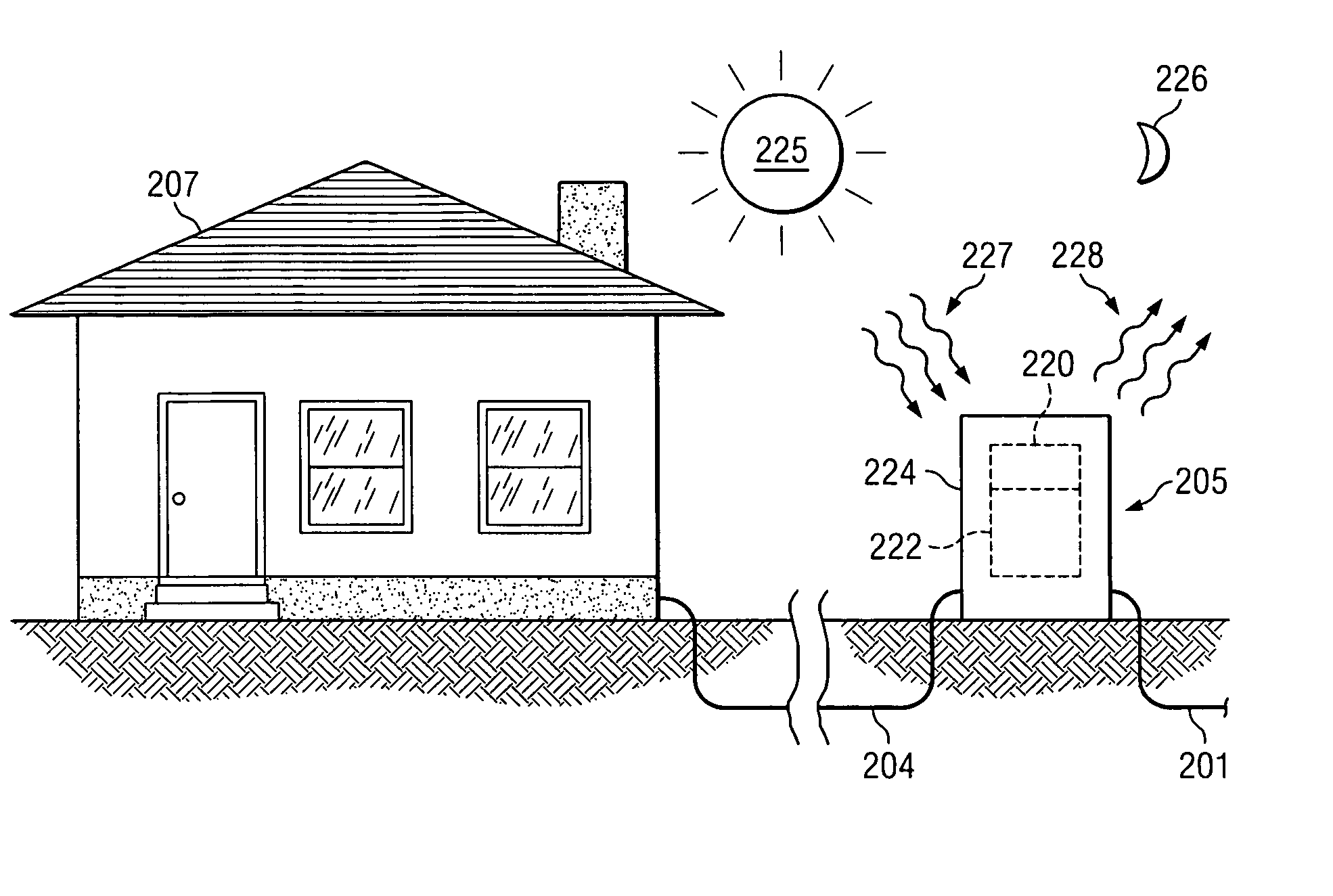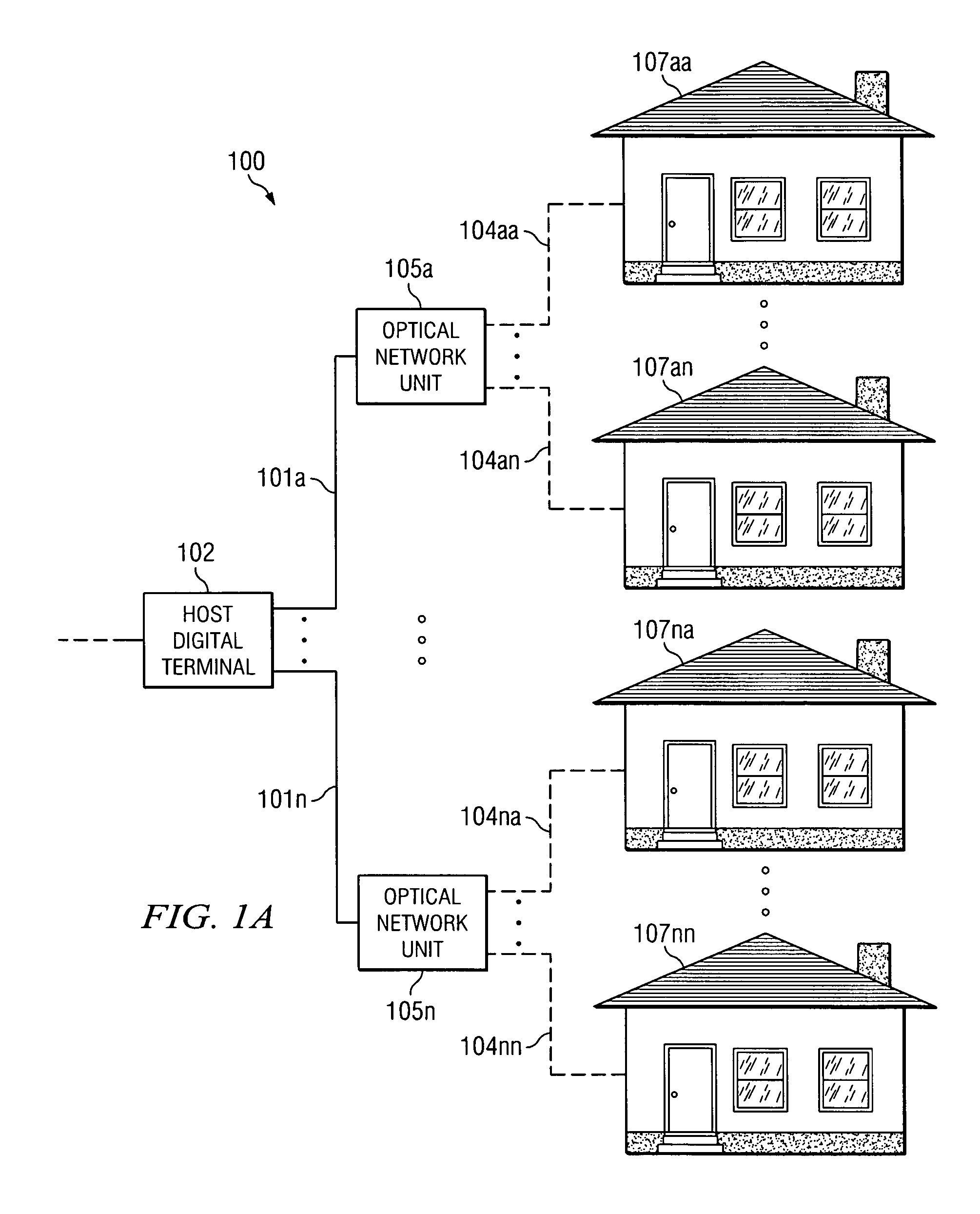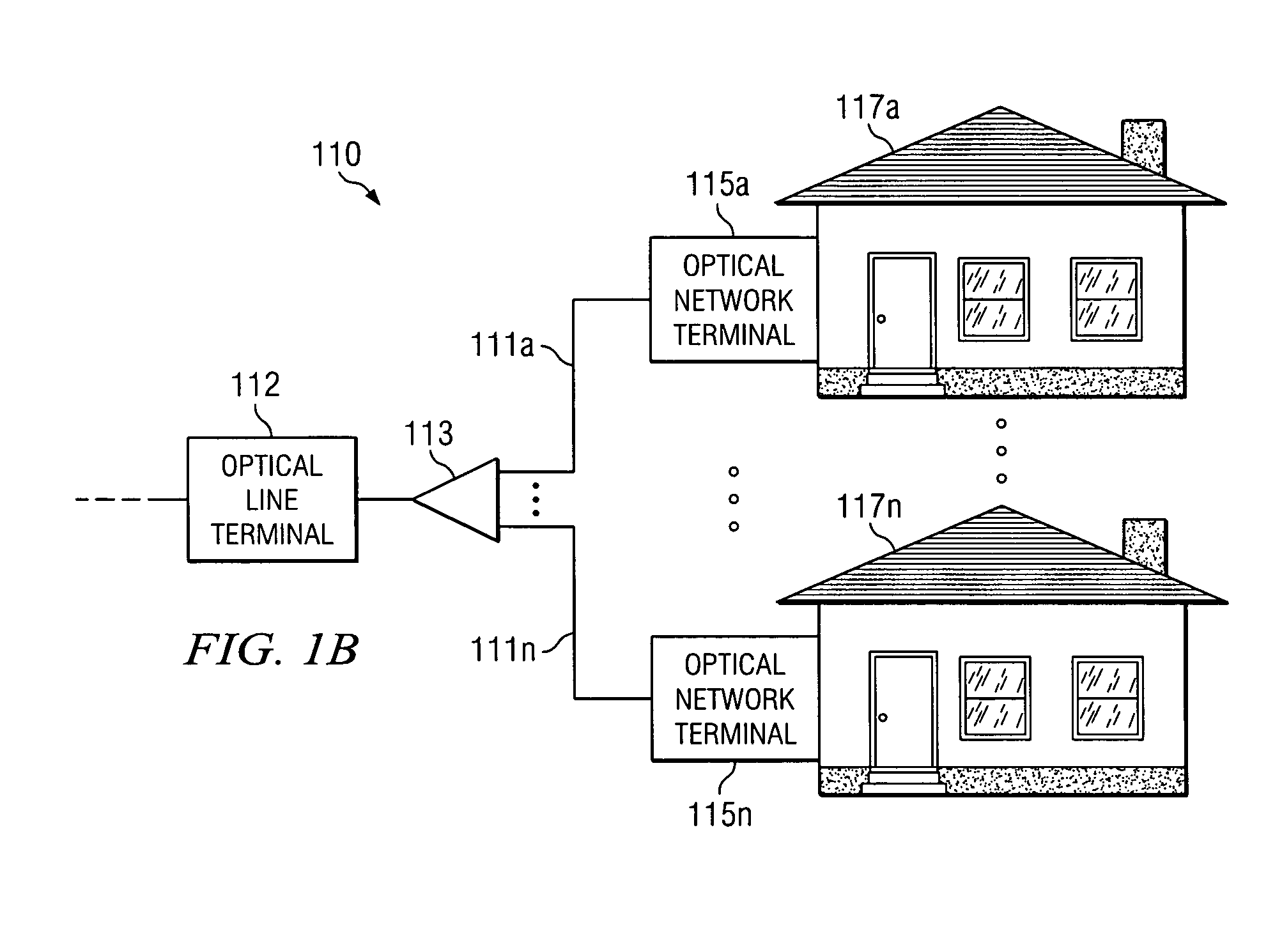Passive cooling for fiber to the premise (FTTP) electronics
a technology of fiber to the premise and electronics, applied in the direction of cooling/ventilation/heating modification, lighting and heating apparatus, electrical equipment, etc., can solve the problems of increasing the heat generated by electronics, fan maintenance, and electrical equipment generating significant amounts of hea
- Summary
- Abstract
- Description
- Claims
- Application Information
AI Technical Summary
Problems solved by technology
Method used
Image
Examples
Embodiment Construction
[0018] A description of preferred embodiments of the invention follows.
[0019]FIG. 1A is an example optical network architecture 100 referred to as a Fiber To The Curb (FTTC) architecture in which an embodiment of the present invention may be employed. A Host Digital Terminal (HDT) 102 communicates via optical fiber links 101a-101n with multiple Optical Network Units (ONUs) 105a-105n. The ONUs 105a-105n in turn communicate via copper links 104aa-104nn (e.g., twisted pair) with subscribers 107aa-107nn.
[0020]FIG. 1B is another example optical network architecture 110 referred to as the Fiber To The Premise (FTTP) architecture (e.g., Fiber To The Business (FTTB) or Fiber To The Home (FTTH)) in which an embodiment of the present invention may be employed. An Optical Line Terminal (OLT) 112 communicates via an optical splitter 113 and optical fiber links 111a-111n with Optical Network Terminals (ONTs) 115a-115n associated with subscribers 117a-117n. The OLT 112 and HDT 102 may be connec...
PUM
 Login to View More
Login to View More Abstract
Description
Claims
Application Information
 Login to View More
Login to View More - R&D
- Intellectual Property
- Life Sciences
- Materials
- Tech Scout
- Unparalleled Data Quality
- Higher Quality Content
- 60% Fewer Hallucinations
Browse by: Latest US Patents, China's latest patents, Technical Efficacy Thesaurus, Application Domain, Technology Topic, Popular Technical Reports.
© 2025 PatSnap. All rights reserved.Legal|Privacy policy|Modern Slavery Act Transparency Statement|Sitemap|About US| Contact US: help@patsnap.com



